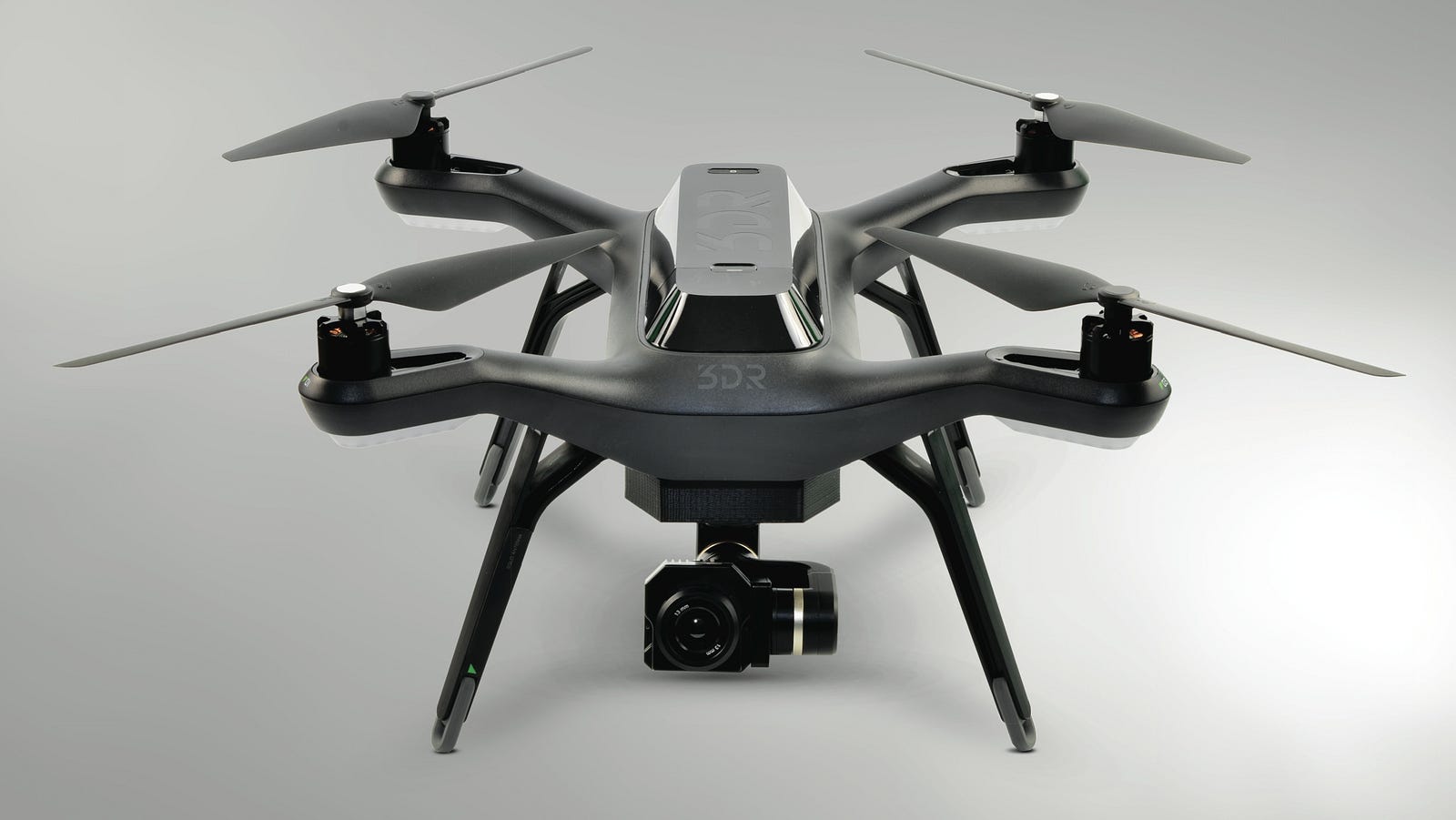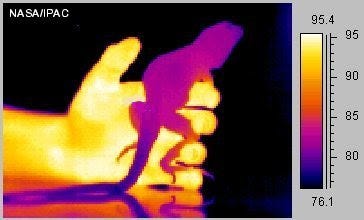
Since even before Solo launched, our customers, community and prospective commercial users have asked when they could expect IR sensors to be integrated into 3DR drones. An experienced operator could possibly hack a solution, but until now off-the-shelf consumer drones haven’t been optimized for IR. That’s why we’re excited to announce the launch of 3-axis stabilized Made for Solo gimbals from OEM Cameras. The gimbals offer tilt control and they’re compatible with all FLIR Pro Vue IR cameras, including the new Pro Vue R radiometric camera. They’re currently available for preorder on the OEM Camera site.
This marks an important step for Solo (and consumer drones in general), broadening applications from video and photo capture to the kind of data capture demanded by commercial users. Here’s a quick gloss of some of those commercial applications that Solo’s new FLIR gimbals will enhance.
Why drone & IR integration is important
Thermal cameras (Infrared sensors, or IR) have been used in a wide array of commercial applications for years. They essentially translate normally invisible heat (IR) radiation into a visual image, so we’re able to see differences in heat the same way we see differences in color. These images are pretty familiar from action or war movies. Here’s a great example of what heat difference looks like when translated by an IR sensor:

Warm hand, cold lizard.
Aerial thermal imagery in particular is valuable for infrastructure and grid inspection, search and rescue, crop and forest health and construction. Until drones like Solo, capturing this data has been expensive, risky and time- and labor-intensive. Solo’s ease of use, autonomy and price point, when coupled with the FLIR, radically democratize this ability, making it easy and efficient for any commercial user to get the IR data they need.
Construction
For building and home inspection, FLIR thermal cameras show areas of structures where temperatures are high. Manual sensors are already frequently used for this kind of thermographic inspection of building interiors. But if you want to measure the exterior, you’ve got to map the whole surface. Imagine having to do this on a high building or on rooftops. It’s not easy, nor cheap. But a Solo equipped with a FLIR can detect poor insulation, leaks or other deficiencies or areas that need to be repaired, such as electrical hubs, and Solo (especially when paired with our SiteScan enterprise app) can do this quickly, automatically, repeatedly and from a safe distance. It dramatically cuts costs in terms of equipment, labor and time.
Search & rescue
Thermal imagery is incredibly valuable for S&R and other public safety applications. It’s tough to see accurately at night, or through smoke, fog and thick foliage. People and animals always (well, almost always, re: above lizard) have different body temperatures than inanimate objects around them, which means FLIR cameras can be used to identify the location of the subject of a search. This is true even at night or the other poor conditions mentioned above, which increases the hours that a rescue team can work.
Solar panel inspection
Solar panels are fairly susceptible to damage and defects, many of which are quite small, such as scratches, broken cells or dirt and dust cover. Some of this damage can even occur in the manufacturing process. It’s tough, sometimes virtually impossible, to see this stuff with traditional visual inspection. However, FLIR cameras make it easy, showing the “hot spots” on solar panels where bad cells are overheating in contrast with good cells, a differential that can be higher than 50°C. Additionally, it’s quite hard to inspect individual cells, especially if you need to cover a vast solar field, but the new FLIR Pro Vue R (the R means radiometric) can show thermal data down to the pixel. This level of data is often necessary for panel inspection, where it’s often critical to be able to see the temperature of individual cells.
The power grid
The electrical distribution grid comprises many elements that need to work simultaneously in a long and complicated chain, including power stations, power lines and transformers. Not only do failures in this chain result in inconvenience, they could also cause dangerous electrical fires. Most of the equipment in this network, of course, is high off the ground and running deadly voltage, plus it’s a huge network and many parts are tough to get to. Drone inspection has obvious values here, in terms of safety, cost, efficiency and reach, and IR integration increases that value exponentially.
Agriculture
Crops and forests contain a lot of data in the form of heat radiation. For the same reasons mentioned above, this data has been tough to come by, and in some cases impossible. However, when you combine Solo with a FLIR gimbal, farmers, agriculturalists, biologists and foresters can suddenly access valuable IR data easily, cheaply and automatically. It’s especially useful for “precision agriculture,” the reduction and targeted application of inputs like water, pesticides and fertilizer. Here are a few IR use cases for the ag community.
- Ripeness. The skin of a fruit typically gets more resistant to water vaporization as the fruit ripens; this change is frequently evinced in temperature differential.
- Crop Yield. You can use IR to see the difference in heat radiation between fruit on a tree and the leaves and wood.
- Diseases. Diseases often manifest in measurable heat differences on plants, depending on the type of disease and how long it’s been active.
- Irrigation. Water stress greatly increases plant temperature.
